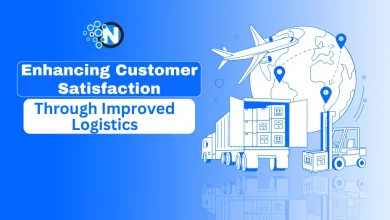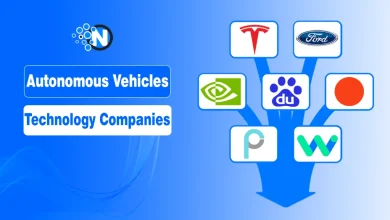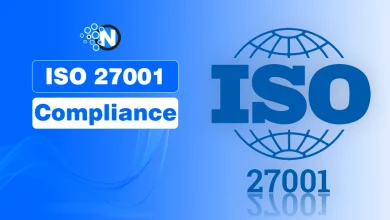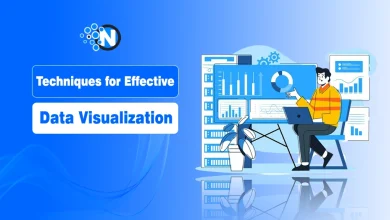The Role of Technology in Remote-First Hiring
The adaptation of technology in the different operations of the business has drastically changed the way, and similarly in the hiring procedure. The traditional means of recruiting are now shifting towards digital processes like remote-first hiring. This process has valued the global candidates, broader reach, higher efficiency, and more inclusivity.
According to research from Owl Labs, about 16% of companies have transitioned to being fully remote, operating entirely without a physical office. Remote-first hiring offers tech companies access to a global talent pool, reduces operational costs, and enhances work-life balance for employees. This detailed note is based on discussing the different aspects like technologies, benefits and future prospects of this technology in remote-first hiring.
Allow Us To Proceed!
What is Remote-First Hiring?
Remote-first hiring is the talent hunting process of a company in which remote workers are set on preference. Not all employees are required to stay at a centralized working location or office; therefore, companies conduct online talent hunts. Remote-first hiring has emerged as a strategic advantage in the tech industry. A study reveals that 85% of developers indicate their organizations have adopted at least a partial remote work model.
Further, many companies hire remote workers to save office space or save money to invest in other business processes. Here comes the technology that plays an essential role in remote hiring for businesses to get the right talent acquisition.
How is Technology Shaping Remote Hiring?
Technology is playing an important role in shaping the process of remote hiring by covering several important hiring aspects. Whether a company requires an investigation of an applicant or a skills assessment report, then multiple tech-driven tools help them.
Further, companies may utilize technologies to streamline their talent acquisition process, like collaborative tools and online video interviewing platforms. These adoptions make it easy for businesses to get the most suitable talent for their required remote position for better outcomes.
Key Technologies Used in Remote Hiring
The uses of technology in remote-first hiring are mentioned here. Read in detail below:
Video Interviewing Platforms
It has become easier than ever to interview remote workers without calling them to the office. Video interviewing tools like Zoom, Slack, and Microsoft Teams offer an easy way to communicate and interview remote workers to acquire talented employees for business.
However, these tools have several features, such as video conferencing, quick messaging, and file sharing, which help to easily interact and communicate with each other. It bridges the gap of physical location and saves the time of both business and employees.

Applicant Tracking Systems (ATS)
Applicant tracking system is software for businesses and employers for hiring and recruiting the remote worker process. ATS tracks the whole process from different stages, from submission to hiring.
It is equipped with tools and software that help analyze, filter, and manage employees. They can identify their skills and behaviour, amplify brand recognition, and find the right and suitable candidates according to business demand.
Artificial Intelligence in Candidate Screening
Artificial Intelligence (AI) is a growing technology that has shaped every industry with machine learning capabilities. Nowadays, most organizations are practising AI to hire the right remote by analyzing their data, automating tasks, and communicating.
AI analyses candidate data such as resumes, job applications and cover letters; it matches the required skills and candidate resume skills, which is helpful in identifying the matching candidate and saving time. It automates the task and offers seamless communication to interview or hire remote workers.
Cloud-Based Collaboration Tools
Cloud collaboration tools provide a platform to share, collaborate and discuss any project together. Various cloud collaboration tools like Microsoft 365, Slack, Box and Google Drive allow the sharing of documents and collaboration.
Organizations can use it to communicate and ask for portfolio projects to check the workers’ capability and matching qualities with the business. You can also use it to manage and schedule meetings, assign tasks, and be updated with project progress.
Skills Assessment Platforms
Skill assessment platforms are also another technology used in remote first hiring. These tools help to hire employees through objective skill testing instead of a resume screening. Skills assessment is more effective than resume testing; for example, if a person has mentioned skills and experience on a resume but the facts are not true.
This is where skills assessment platforms evaluate remote workers’ skills, qualifications and competencies. Some of the popular skills assessment tools are Testgorilla, eSkill, iMocha, and TestDome.
Benefits of Using Technology in Remote-First Hiring
Efficiency and Time Savings
As mentioned earlier, video interviewing tools, AI and skill assessment tools are effective technological use in remote first hiring. The traditional method of recruiting workers takes a lot of time to check resumes and interviews one by one. However, technology has made it easier to save time by using different tools and platforms.
Improved Candidate Experience
Most remote job-seeking employees want a seamless and transparent hiring process. So, the use of technology offers personalization, user-friendly experience and enhanced communication.
Through resume screening, you can only interview the matching candidate, and you have knowledge about their skills, so you don’t need to ask additional questions. Video interviews are another way to improve the candidate experience by offering flexibility to give interviews from anywhere.
Cost Effective
Implementing the technologies for remote first hiring is more cost-effective than the traditional or physical hiring process. For example, calling job seekers and applicants in the office requires a complete setup and TA/DA, as well as costs.
On the other hand, the use of technological software simply requires one to read a resume, take a test, and do an interview, which costs nothing.
Access to a Global Talent Pool
Technology has bridged the gap between businesses and employees in terms of geographical location so that they can work from anywhere. With a variety of tools and software, they can collaborate on projects, work together, and communicate through video conferencing tools. As a result, businesses can hire talented people in global talent acquisition from any corner of the world to maximize efficiency.
Implement Data-Driven Insights
Whenever companies need to make decisions for better outcomes, then they need data-driven insights for optimized processes. Here comes a technology that provides them with real-time data analytics reports for real-time invaluable insights.
These reports will assist them in making the right decision in talent acquisition to hire a safe clear, recorded employee. In this way, businesses may easily hire the most suitable and clear employee for safer future records.

Smooth Onboarding Process
The technology also improved the onboarding process through automation, flexibility, personalizations and online training programs. It helps schedule training sessions, personalize emails, and do many more.
With available information on cloud-based tools, new employees work with flexibility and convenience. Instant messages help HR to send and assign specific roles quickly. Online training programs and learning models also improve the onboarding process.
Future Prospects in Remote-First Hiring
Remote working and stuff took a start back in 2019 when the world faced a chronic viral disease, COVID-19. Although businesses and employees get used to it and continue to work remotely, it benefits both of them. Companies save costs by having a centralized location for work, electricity bills, and more.
On the other hand, employees get a chance to balance their work and life by dividing their time between work and family. There are several reasons why employees prefer remote jobs, such as the lack of need to get a ride to the office, work-life balance, and more.
A thing that works for two candidates only when it benefits them both is remote-first hiring, which is beneficial for them. In our opinion, this talent acquisition strategy will continue to grow, and technology will obviously add something new. These indications empower us to write that the future of Remote-First Hiring is very promising.
Final Verdict
Remote First Hiring is the process of talent acquisition, whether from the local market or international locations for remote talent. This approach enables businesses to acquire the right talent for the position they need so that their company can get massive benefits.
It is obvious that technology plays an important role in enhancing the outcomes of the procedure in small periods. In the above section, we have compiled a comprehensive overview of the role of technology, whether through technology-driven tools or interviewing forums.




